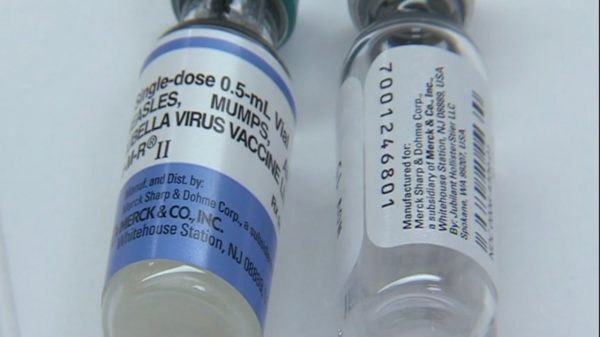
In the wake of a devastating measles outbreak, California passed a law to crack down on exemptions and improve vaccination rates. Building on the work of previous research, a study released this week shows that the 2016 legislation had the greatest effect on high-risk areas where the vaccination rates were the lowest.
The law contributed to an estimated 3.3 percent increase in coverage for measles, mumps and rubella vaccine, also known as MMR, and a 2.4 percent decrease in non-medical exemptions across the state, according to the study published Monday in the journal PLOS Medicine.
The government intervention came after more than 100 measles cases were linked to a Disneyland outbreak in which the majority of patients were unvaccinated or had no vaccine records. As a result, lawmakers passed SB 277, which eliminated the personal belief exemption to help improve vaccine compliance.
Researchers say the findings reveal how states facing similar issues with vaccine hesitancy could pass laws to improve coverage. Researchers said California was an ideal place to measure vaccine adoption since the state created an option for parents to opt-out of vaccinating their children through non-medical exemptions and then took the option away.
“That flipping and flopping of the policy provide this natural experiment to measure what is the impact on vaccine coverage,” said Dr. Nathan Lo, a resident physician at UC San Francisco who co-authored the study.
“If you’re in one of these other 18 states in the United States that has these options for non-medical exemptions (and) you remove these policies what improvement to vaccine coverage should you expect?”
More studies confirm law works
Previous studies concluded the law helped improve the state’s overall vaccination rate from 92.8 percent in 2015 to 95 percent in 2017. But the latest research shows the greatest differences were at the county level, Lo said.
The change in MMR vaccine coverage ranged from a 6 percent decrease to a 26 percent increase between 2015 and 2017, according to the study. Only 12 counties saw a decrease in vaccine compliance and close to one-third saw an increase greater than 4 percentage points.
“That 3 to 4 percent increase (statewide) represents much larger vaccine coverage increases in a fraction of California,” Lo said. “There are a few counties in California that had particularly low vaccine coverage and in those high-risk counties — those low vaccine coverage counties — that’s where it increased dramatically by 10-plus percent.”
The study also highlighted an unforeseen challenge with the previous policy: the rise of medical exemptions. Researchers concluded that the policy change was associated with a 0.4 percent increase in medical exemptions statewide and a 2.4 percent increase among counties.
“This study shows that policy changes work, making it critical that our legislative and executive leaders understand vaccine science and community immunity,” said Leah Russin, a spokeswoman for Vaccinate California, a parent advocacy group in favor of vaccines.
“Coupled with education, changing vaccine policy to eliminate non-medical exemptions to school vaccine requirements is an important public health tool. The California experience demonstrates that measurable gains in protection from preventable disease are achievable with legislative leadership.”
In the years after the personal beliefs exemption was outlawed, the state saw a surge in bogus medical exemptions as parents moved to avoid vaccines. The shift in behavior prompted dozens of investigations of doctors who were accused of wrongfully issuing the exemptions and the state legislature passed another law tightening the standards.
The new laws, which go into effect next year, give the Department of Public Health the power to revoke and approve medical exemptions granted by a doctor who has issued more than five medical exemptions. Each of the new laws was either sponsored or co-sponsored by Sacramento lawmaker Dr. Sen Richard Pan.
Pan said most of the research has focused on vaccination rates across the state but it’s more important to examine the law’s effect on local neighborhoods, which the latest study did to some degree.
“An exposure happens in a neighborhood,” Pan said. “It doesn’t happen across the state at one time.”